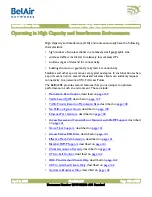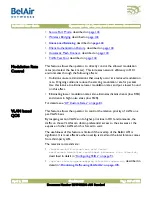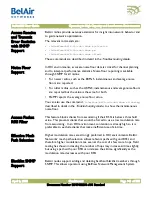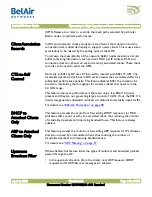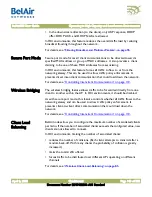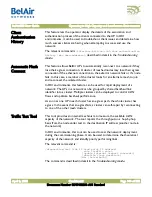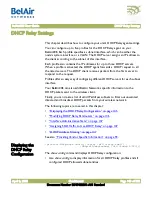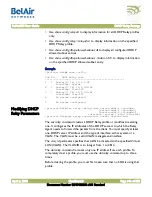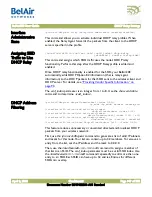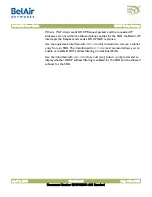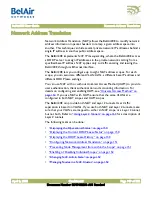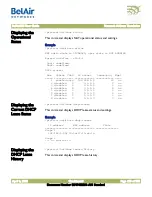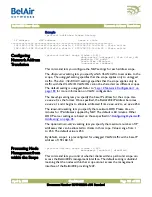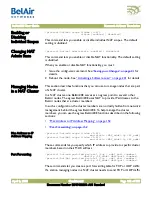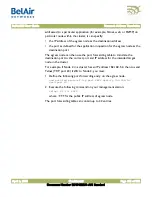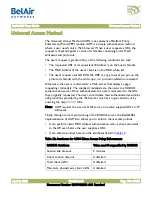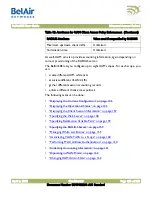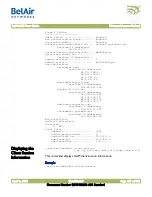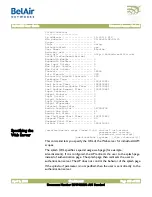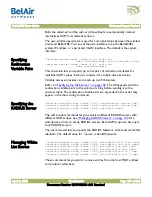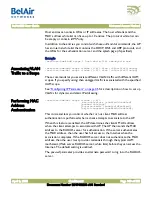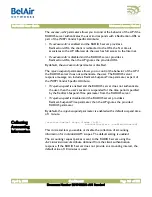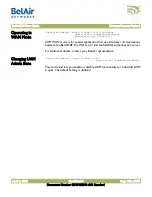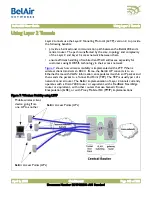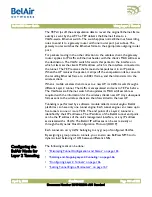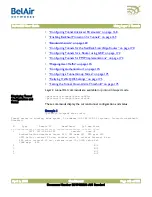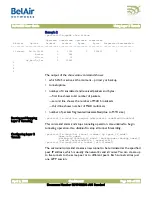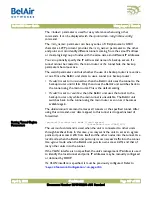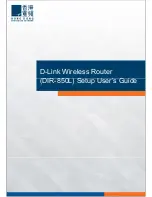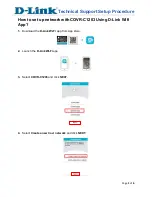
BelAir20E User Guide
Network Address Translation
April 2, 2012
Confidential
Document Number BDTM02201-A01 Standard
Enabling or
Disabling
Individual Scopes
/protocol/nat/set scope <index (1-8)>
status {enabled | disabled}
This command lets you enable or disable individual NAT scopes. The default
setting is
disabled
.
Changing NAT
Admin State
/protocol/nat/set admin-state {enabled | disabled}
This command lets you enable or disable NAT functionality. The default setting
is
disabled
.
When you enable or disable NAT functionality, you must:
1 Issue the
config-save
command. See
“Saving your Changes” on page 21
for
details.
2 Reboot the node. See
“Activating a Software Load” on page 201
for details.
Managing Nodes
in a NAT Cluster
This section describes functions that you can use to manage nodes that are part
of a NAT cluster.
In a NAT cluster, one BelAir20E serves as an egress point to several other
BelAir nodes. The egress BelAir20E uses NAT to provide IP addresses to the
BelAir nodes that are cluster members.
In such a configuration, the cluster members are normally hidden from network
management behind the egress BelAir20E. To help manage the cluster
members, you can use the egress BelAir20E functions described in the following
sections:
•
“Mac Address to IP Address Mapping” on page 152
•
Mac Address to IP
Address Mapping
/protocol/nat/add scope <index (1-8)>
mac-static <MAC_addr> ip <IP_addr)
/protocol/nat/del scope <index (1-8)>
mac-static <MAC_addr> ip <IP_addr)
These commands let you specify which IP address to provide to specific cluster
members based on their MAC address.
Port Forwarding
/protocol/nat/add port-fwd protocol {tcp | udp} port <number>
dest-ip <IP_addr> dest-port <number>
/protocol/nat/del port-fwd protocol {tcp | udp} port <number>
dest-ip <IP_addr> dest-port <number>
These commands let you create a port forwarding table for TCP or UDP traffic.
If a station managing nodes in a NAT cluster needs to send TCP or UDP traffic

